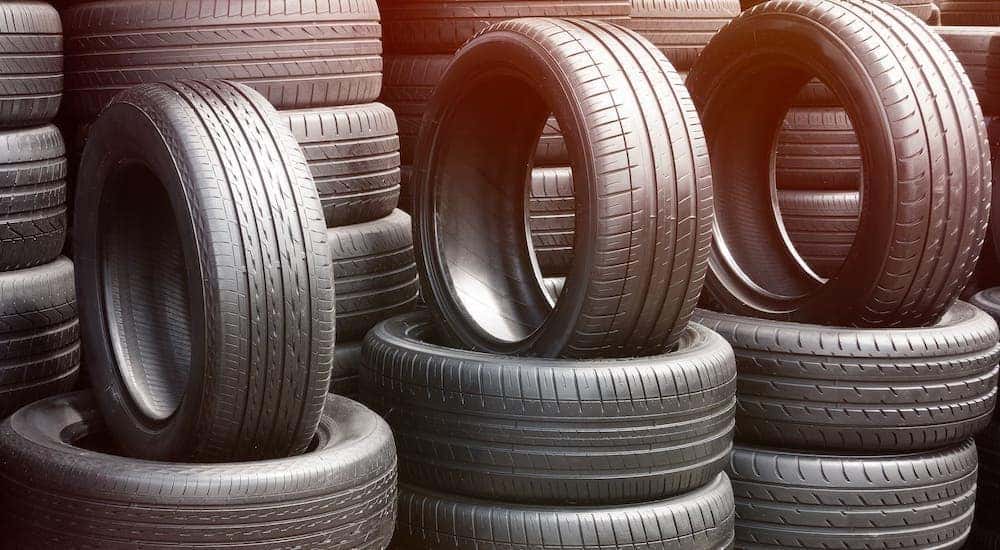Morris Tire and Alignment: Your Relied On Source for Reliable Service
Morris Tire and Alignment: Your Relied On Source for Reliable Service
Blog Article
Tire Solution: Comprehending Tire Pressure Surveillance Systems
Comprehending Tire Pressure Tracking Systems (TPMS) is a critical element of keeping ideal car efficiency and security on the road. With developments in automotive modern technology, TPMS has actually ended up being a typical feature in contemporary cars, offering real-time information on tire pressure degrees.

Importance of TPMS
The significance of Tire Pressure Tracking Solutions (TPMS) exists in their capability to improve vehicle security and performance via real-time surveillance of tire pressure levels. Keeping the appropriate tire stress is vital for making certain optimum handling, braking, and total safety of a vehicle. TPMS gives motorists with prompt comments on any overinflated or underinflated tires, enabling timely changes to be made.
Elements of TPMS
Comprising different essential components, a Tire Stress Surveillance System (TPMS) functions as an advanced safety and security function in modern cars. The primary parts of a TPMS consist of sensing units, a control module, and a caution indication. Sensing units are usually situated in the tire shutoff stem or affixed to the wheel assembly, where they determine tire stress and send information to the control component. The control component procedures this information and sets off a warning if it identifies considerably reduced stress in any one of the tires. The caution indicator, commonly an icon on the control panel, alerts the driver to check the afflicted tire or tires. Some progressed TPMS models additionally present the real tire stress readings for each and every tire, offering chauffeurs with real-time information to guarantee optimal tire performance and safety. By keeping an eye on tire stress constantly, TPMS helps prevent accidents, decreases tire wear, and improves gas performance, making it a crucial part for automobile safety and efficiency.
Kinds Of TPMS

On the other hand, indirect TPMS depends on the lorry's wheel rate sensing units to keep track of tire stress. This system detects underinflation by comparing the rotational speeds of the wheels. Indirect TPMS is less expensive than direct TPMS, as it makes use of existing sensors within the car.
While straight TPMS supplies much more precise analyses, indirect TPMS is simpler in design and usually needs much less maintenance. Both systems have their advantages and restrictions, and the option between them usually relies on aspects such as price, lorry make, and individual choice. Recognizing the distinctions in between these two types of TPMS can help lorry proprietors make educated decisions pertaining to tire upkeep and safety and security.
TPMS Upkeep Tips
Conduct routine checks index on the tire pressure degrees and contrast them with the TPMS analyses to guarantee they are consistent. During tire rotation or substitute, make certain that the TPMS components are managed thoroughly to protect against any type of possible damages. If the TPMS warning light illuminates on the dashboard, deal with the concern promptly by checking the tire pressures and the overall system for any faults.
Benefits of Correct Tire Pressure
Preserving appropriate tire pressure, as emphasized in TPMS Maintenance Tips, is vital for enjoying the countless advantages linked with optimum tire stress degrees. One of the primary benefits of keeping the proper tire stress is boosted morris tire and alignment fuel efficiency. When tires are properly inflated, there is much less moving resistance, resulting in much better fuel economic climate. Furthermore, proper tire stress makes sure even tire wear, extending the life-span of the tires and advertising much safer driving conditions. With the right tire stress, vehicles also have far better handling and traction, especially in damaging climate condition. This can boost total driving performance and safety and security for the vehicle driver and guests. Maintaining optimal tire stress can add to a smoother and a lot more comfy adventure by reducing vibrations and noise caused by underinflated tires. To conclude, the advantages of proper tire stress surpass simply tire longevity; they include boosted gas performance, enhanced safety and security, better lorry performance, and general driving convenience.
Final Thought
In verdict, understanding tire pressure tracking systems (TPMS) is critical for maintaining optimum tire pressure and making sure lorry safety. By recognizing the significance of TPMS, recognizing with its elements, recognizing the various kinds readily available, sticking to correct maintenance ideas, and recognizing the advantages of preserving appropriate Read More Here tire stress, motorists can improve their driving experience and extend the life expectancy of their tires. Appropriate tire stress is crucial to secure and effective lorry procedure.

Report this page